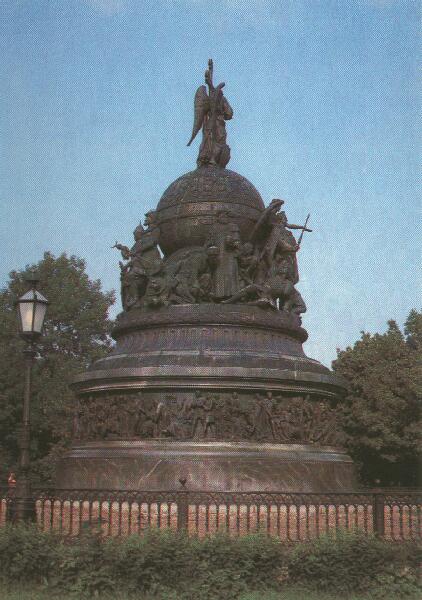

Since 1980-s GPR Laboratory of the Saint-Petersburg
State Technical University has been
developing and operating a family of
short-range high-resolution frequency modulated continuous wave (FMCW)
subsurface radars (GPR). The main goal of this work is to provide very
high-resolution microwave images, enabling users to visualize and evaluate internal
structural features and flaws.
Three systems were developed operating in 0.5-1, 1-2 and 2-4 GHz frequency bands.
0.5-1 GHz system has the longest range (more then 2 meters, but the exact figure depends mainly on the conductivity of the soil) and primarily used in archaeological investigations.
1-2 GHz and 2-4 GHz transceivers are often mounted in one case because they supplement each other. Resulting system is compact, has very high range resolution (few centimeters), and used primarily in civil engineering (especially during restoration of old buildings and monuments, but also in nondestructive evaluation of modern structures, such as concrete members and pavements). There is also some interest in this system from police and customhouse.
All radars have wideband bistatic antenna systems. Transmitting and receiving antennas can be disconnected and used for tomographic imaging (if the two sides of the object are accessible), common depth point measurements with different distances between antennas (in this case permittivity can be easily calculated) or cross-polarization measurements.
Specially developed data collecting, data processing and visualization software runs on an IBM-compatible notebook computer. Customized software was often developed for the investigations of unique objects.
Field testing of 0.5-1 GHz GPR have included investigation of the archaeological objects (in collaboration with State Hermitage Museum) and the walls of the 15-th century fortress in Novgorod.
1-2 GHz and 2-4 GHz systems were used for the detection of numerous old ventilation channels in the walls of State Hermitage Museum during installation of the new air-conditioning system. The old brick walls were up to 1.5-1.8 meters thick. This work was highly successful.
All FMCW systems were used (1995-98) in investigation of the monument devoted to 1000-years anniversary of Russia (built in 1862) in Novgorod. Results confirmed some fragmentary existing information, revealed many previously unknown features (such as existence of the internal metal anchors and absence of some planned constructions) and were used in planning of restoration actions.
Current efforts are concentrated on improving wideband antennas and transceivers, introducing more effective signal processing, development of more capable and user-friendly software, collecting more theoretical and experimental information about microwaves' propagation in different materials, forward and inverse scattering problems, combined use of GPR and other non-destructive evaluation methods (resistivity method, metal detectors).
For example Russian gas and oil company "Gazprom" is interested in suggested by our group (in collaboration with St.-Petersburg's geophysicists) combined use of pulse GPR and resistivity method for detection of karst regions (with underground voids), which can be dangerous for their pipelines.
Besides designing radar systems we are also investigating interesting objects using existing equipment (mainly FMCW and pulse GPR, but also resistivity method, metal detectors and other). This work gives us better understanding of customers' needs and capabilities/limitations of different methods and equipment.
We also give consultations on the problems of nondestructive evaluation of different constructions.
Our recent theoretical estimations and experiments have shown the possibility of using similar in design and signal processing but higher frequency FMCW systems (operating in the millimeter band, with tens of GHz bandwidth) for nondestructive evaluation of general composite structures, giving information about flaws, voids and delaminations as well as determine material porosity and moisture levels by the changes in the dielectric constant. Another possible application for the millimeter wave FMCW radars is the detection and evaluation of surface fatigue cracks in large metallic structures (bridges, ships, oil rigs) under the dielectric coating (paint) using the effect of waveguide propagation of the millimeter waves in the crack.
Some examples of our capabilities:
1. Horizontal cross-section (approximately 1 meter above ground) of the round pedestal of the monument, devoted to the 1000-years anniversary of Russia (1862) has confirmed the existance of the round internal void and revealed thickness of the pedestal's walls and exact shape of the interface between outer granite facing and inner limestone masonry. The diameter of the pedestal is 10 meters. 0.5-1 GHz FMCW GPR was used.

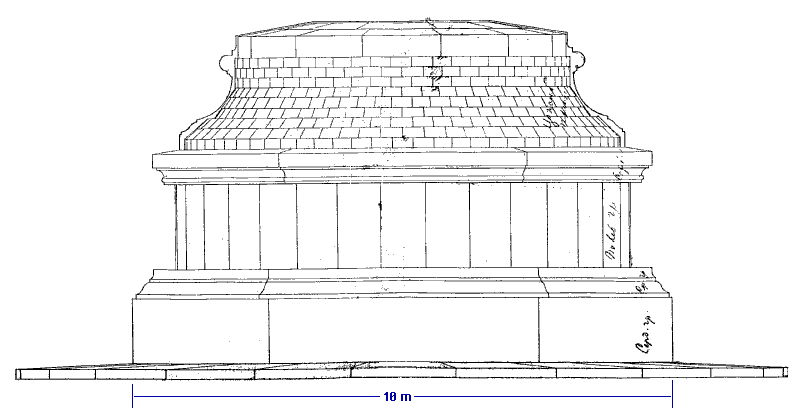
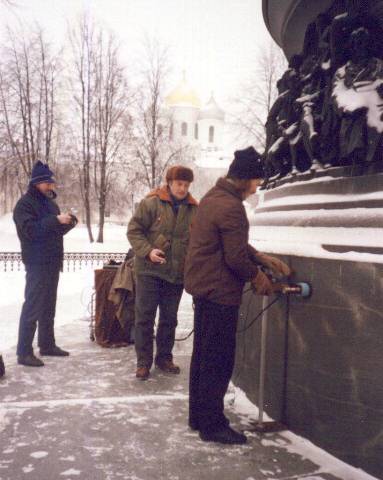
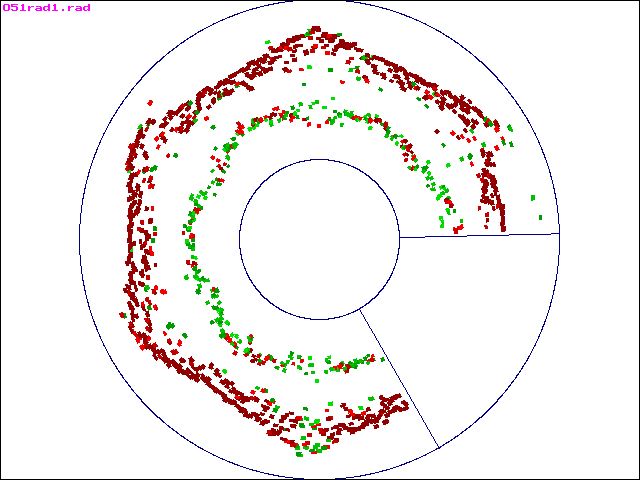
We have made the same cross-section using 150 MHz pulse GPR. Subsequent core drilling confirmed all FMCW and pulse GPR data.
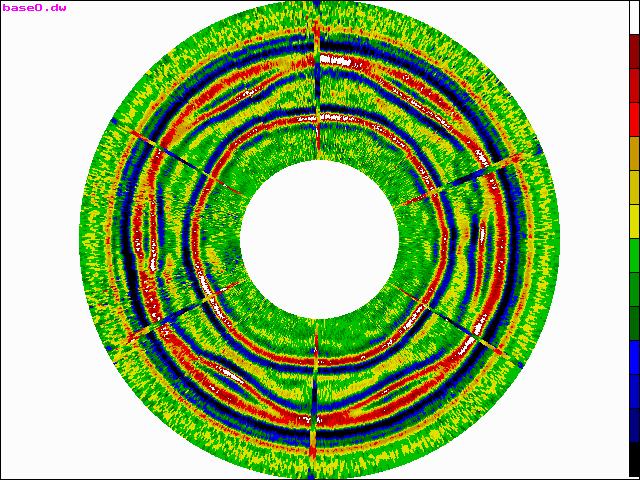
2. Radar images of the metal anchor (fixing element) used to unite outer granite plates of the same monument (their existence was previously unknown to restorers). They are based on the very high resolution data from 2-4 GHz FMCW GPR collected over an area of approximately one square meter near the vertical joint of two granite plates. This 3-D data set was transformed into a set of 2-dimensional slices (only a few centimeters thick) from different depths. Our conclusion is that anchor consists of two pairs of vertical metal rods (depth slices 10 and 19 respectively) connected by horizontal metal plates. Exact dimensions and depth were estimated from the set of slices.
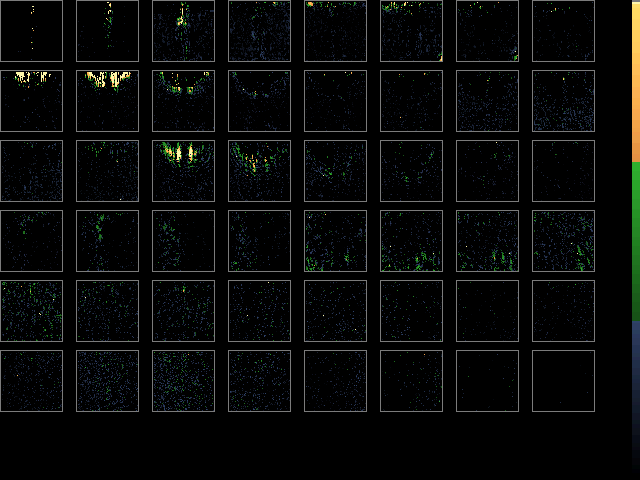
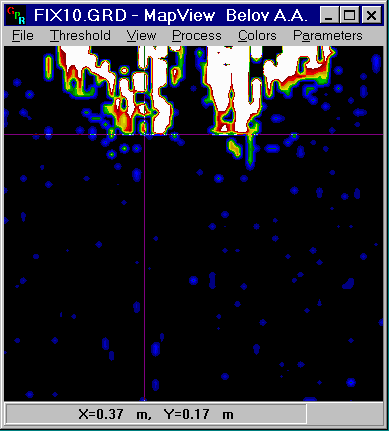
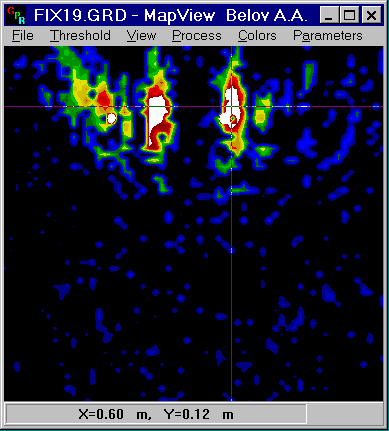
3-dimensional renderings of the same data set viewed from different angles were made (the outer surface of the monument is marked with X).

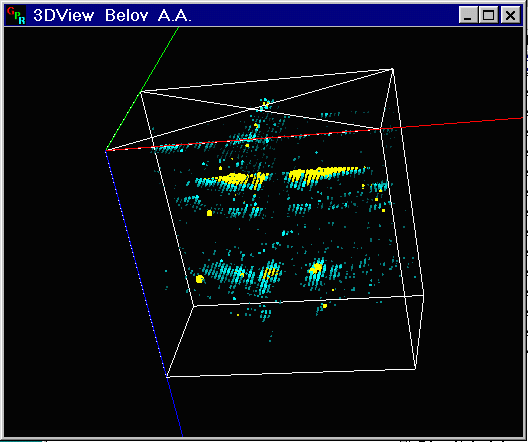

Final reconstruction of the anchor (based entirely on FMCW GPR data).
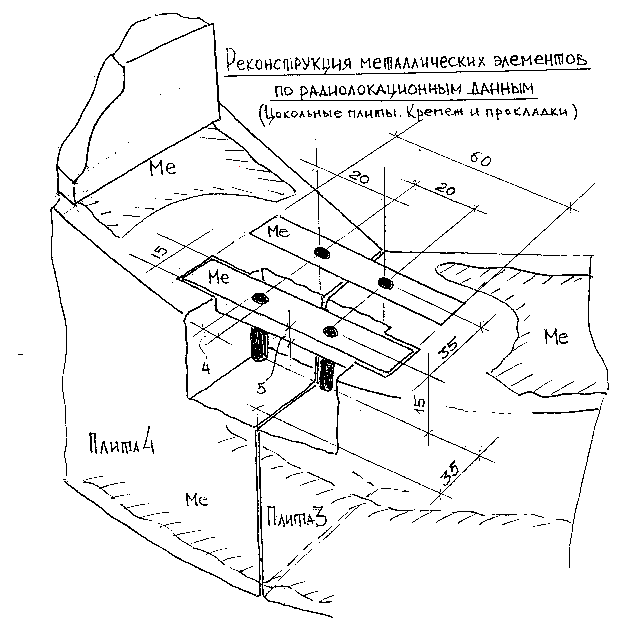
3. Part of the wall of the 15-th century fortress in Novgorod. Horizontal cross-section (bottom of the picture) shows big void of unknown nature (maybe immured internal room), vertical 2-dimensional slice (top of the picture) from the appropriate depth helps to evaluate its exact (very big) size. The existence of the void was confirmed by drilling. 0.5-1 GHz FMCW GPR with special antenna system (towed on small wheels along slant and vertical surfaces) was used.
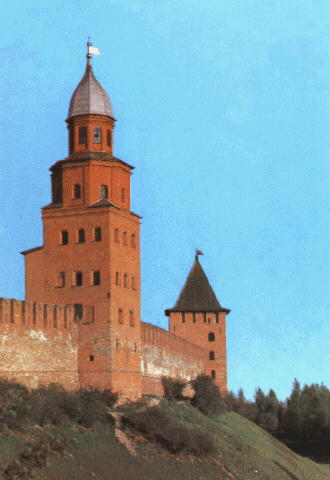
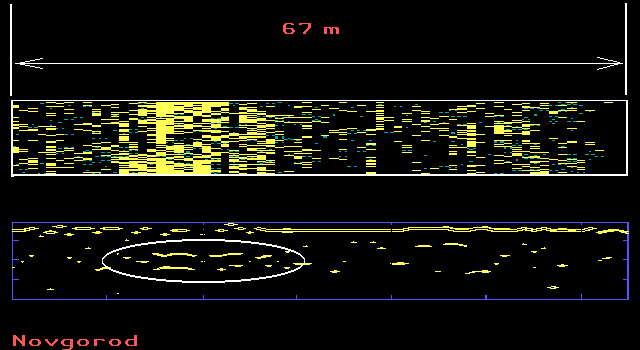

4. Photograph of the first dual band portable radar using 1-2 and 2-4 GHz transceivers (2-4 GHz antennas with HF cables on the first plan, 1-2 GHz antennas not shown).
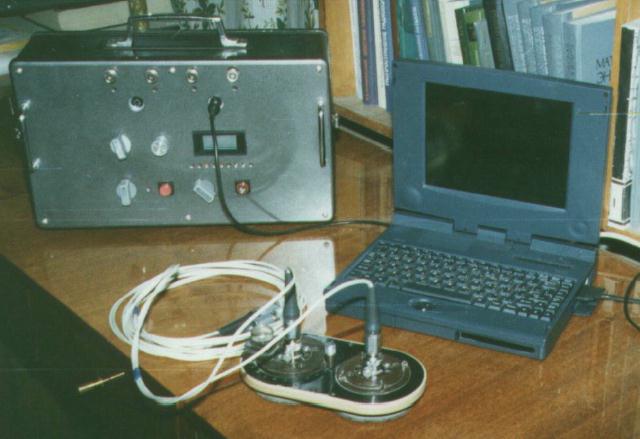
5. Photographs of the 1-2 GHz transceiver (transmitter/receiver) module.
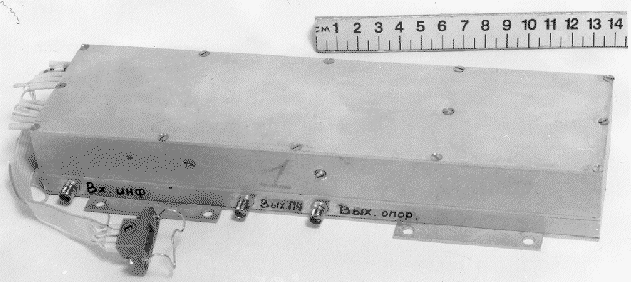
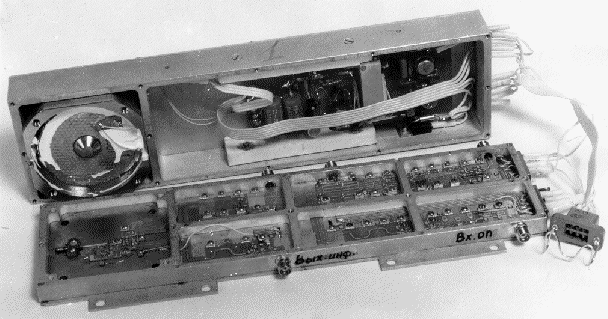
E-mail: radar@radio.stu.neva.ru